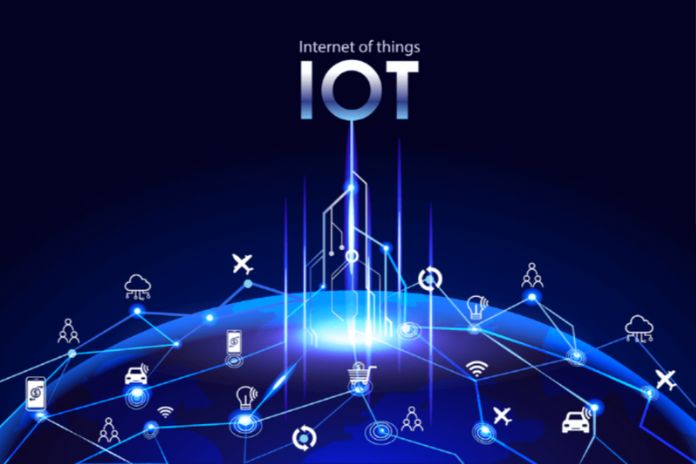IoT is composed of various elements, but among them, the most indispensable are
- things
- sensor
- network
- Application
Let’s take a look at how each element relates to the IoT configuration one by one.
Things
“Things” refers to devices like electrical appliances and smartphones. IoT is sometimes called the “Internet of Things,” It can be said that the “things” that form its foundation are essential elements in configuring it.
Everything from large objects such as cars and agricultural machinery to small objects such as pens and toothbrushes has become the target of IoT.
ALSO READ: Wasabi Cloud: SEP Expands Portfolio For Data Protection
Sensor
Sensors are technologies that measure data embedded in “things”. It can sense objects such as temperature and light and convert their states and changes into information.
- Temperature sensor
- Accelerometer
- GPS
There are various types, and it is possible to correspond to all information.
Recently, sensors that replace the five human senses, such as taste and smell, have also appeared. In addition, cameras and microphones that seem to have nothing to do with sensors are classified. One of the reasons for this is that advances in information processing technology have made it possible to automatically grasp “what is being captured” and “what is producing sound” when analyzing video and audio.
This way, various types of sensors have appeared along with technology development. But more variety means more options for us. We must select sensors that meet the purpose of building the critical IoT system.
To prevent a situation in which the necessary data cannot be obtained due to the wrong selection,
- what sensor to choose
- What kind of events should be converted to data in what format
The task of considering is becoming critical.
Network
A network is a means of sending data acquired by sensors to terminals such as computers and smartphones.
And the network used in IoT is called the “wireless communication standard”,
- Wi-Fi
- Bluetooth
- LTE
- 5G
In particular, 5G is a good communication system that supports the IoT era with four features: “high speed”, “large capacity”, “multiple connections”, and “low latency”.
In this way, there are various types of wireless communication standards. Still, they are divided into “short-range communication” and “long-distance communication”, and the selection depends on “what kind of IoT device to develop”. Each classification is as follows.
short-range communication – Wi-Fi, Bluetooth, ZigBee
long-distance communication- LET,4G,5G
Although short-distance communication tends to increase communication speed, it consumes a lot of power, and the reach of radio waves varies depending on the standard. Remember that Wi-Fi and Bluetooth are generally about 100m, and ZigBee about 50m. Furthermore, it has a stable frequency band (*), ideal when controlling several devices in a narrow range.
What is familiar with long-distance communication is that radio waves reach a wide range of several hundred meters or more. Therefore, it can be used outdoors, such as in the forest. Both 5G and LPWA, attracting attention as communication in the IoT era, can deliver data over a wide area due to their long-distance communication.
5G is
- high speed
- High Capacity
- multiple connections
- low latency
Due to the above characteristics required, accuracy and reliability, such as remote control of machines and automatic driving, are required. LPWA is suitable when low cost and low power consumption are a priority.
This way, it is essential to use 5G and LPWA appropriately, depending on the application and budget.
Application
The application receives the data measured by the sensor through the network, and the following processing is performed.
Visualization Of Collected Data
Even if the data can be moved to the terminal, it isn’t very sensible unless it is in a state that is easy for us to understand. Therefore, the data should be presented in suitable specifications such as graphs and tables.
For example, let’s say that we have been sent rainfall data for one month during the rainy season. It’s hard to see just because the numbers are lined up side by side, and even on days with a lot of precipitation, it’s hard to tell. Display it using a bar graph in the application. By making a bar graph, you can see at a glance which days have the most precipitation.
“Machine-led information processing” is the original element of IoT, but the priority should be “to make it easy for people to use. ” So the application has data visualization.
Data Analysis
For data analysis, let’s take an image and video analysis as an example. Surveillance cameras, often installed in shops, street corners, and recently at home, are connected to the network, so you can remotely check the location captured by the camera. However, it cannot be said that it is “completely machine-driven” because it is a human who finally checks the image.
For this reason, recent advances in analytical technology have made it possible to accurately recognise how a person captured by a camera is performing. This technology will make it possible to notify people only when they want to be notified.
Prediction/Optimization
By visualizing and analyzing the data mentioned above, we have made it possible to provide data in a state that is easy for people to understand. However, the person who receives the visualized data may misinterpret it because they do not know what they need.
We let the machine think about ” which part of the received data is necessary “to prevent such mistakes. At the same time, it gathers a lot of information quickly, grasps the accurate big picture, and optimizes it.
IoT comprises these indispensable elements, leading our lives and society in a better direction.


